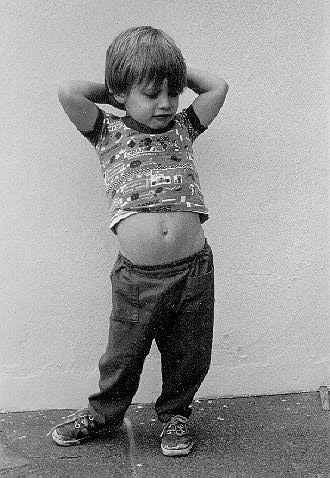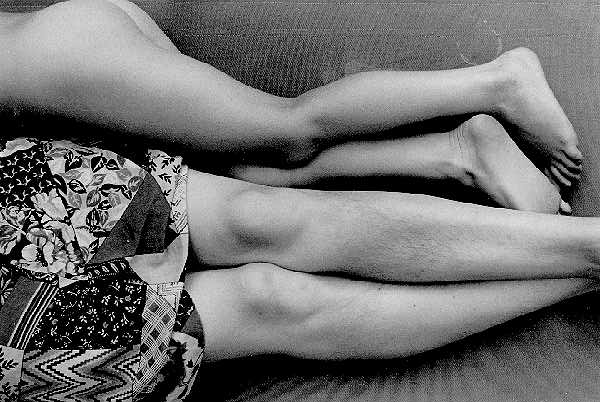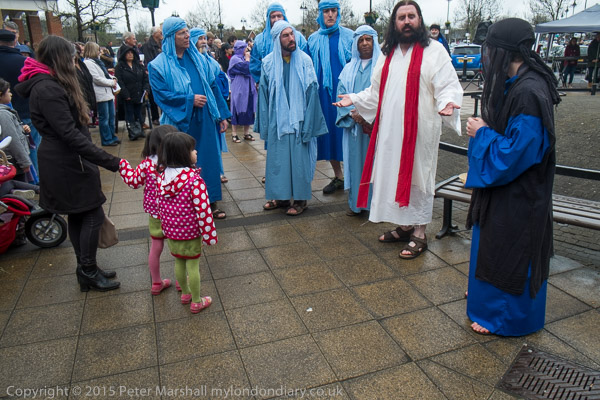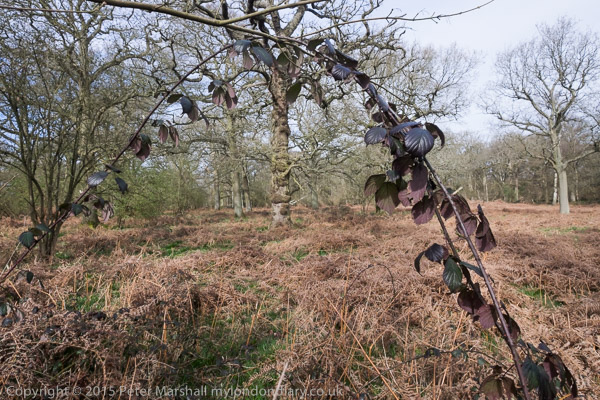Like many of my articles, the piece on the Photo League I published in 2001 was based on work I had done earlier, either for teaching or for articles in a small magazine that I edited for some years, later reworking and adding material to them for publication.
And rather than relying on the images in books and magazines, and on slides I made from these as well as commercial film-strips and a few videos mainly recorded from TV, I had to find images and articles I could link to on the web.
Many of those links no longer work, but there is now far more material on the web and it is much easier to find than in the days before Google. So I’ve removed any links from this piece, and leave it to the reader to research those aspects that they find of interest. Anyway, here’s the piece from 2001 without those links:
The New York Photo League
Origins
The Photo League was one of the most important movements in twentieth century photography, its influence spreading wide from New York. Yet it remains one of the least well known areas of photography, with many half truths and some downright fiction in the history books and on web sites. In this feature I hope to state some of the main points about it, and also to state why I believe it to be so important. Along the way I hope to blow away some of the myths.
Of course, there are long scholarly and no doubt more accurate accounts than this, although some historians perhaps lose sight of the wood as they concentrate on the leaves. This is an outline only. In future features I’ll look in more depth at some of the photographers who were members or otherwise associated with the organisation.
Anne W Tucker, Clare Cass & Stephen Daiter’s book ‘This Was The photo League: Compassion and the Camera from the Depression to the Cold War’, published by the Stephen Daiter Gallery, Chicago in 2001 is probably a good – if expensive – reference for those who want more detail. Anne Tucker also contributed a chapter, ‘Strand as Mentor’, to the book ‘Paul Strand: Essays on his life and Work’ edited by Maren Strange, Aperture, 1990. Some information in this feature was taken from her and other essays in this book, including one by Walter Rosenblum.
The ‘Film and Photo League’ was founded in 1930, but its origins lay in the earlier Workers’ Camera Club of New York which had been active for some years. As the name suggests, this was a communist inspired organisation. Workers’ International Relief , which was the American chapter of the Internationale Arbeiterhilfe, part of the Communist International, sponsored the merger of the Workers’ Camera Club with an organisation of similar nature, the Labor Defender Photo Group, into the New York Film and Photo League.(FPL)
The object of the League was to make film and photographs that supported workers in their struggles against the bosses, that stood for the rights of the working people and fought for a better life for them. These movements drew their inspiration from the German worker-photographer movement organised by Will Munzenberg. They aimed to awaken the working class and train them in the use of film and photography in the production of politically committed pictures.
Film occupied an important place in Russian culture of the era, and the FPL also aimed to project a positive picture of Soviet cultural achievements in this area as well as producing it s on films. Although still photography was seen as important and the majority of members were still photographers, the movement in the early years was dominated by the film-makers, some, including Paul Strand were also well known as still photographers.
The late 1920s and 1930s were a period when intellectual life in the Western world was dominantly left wing. Capitalism was seen as having led to the carnage of the First World War and later the failures of the Depression. Following the Russian Revolution in 1919, a new society was being created in the Soviet Union that would lead to a freer and more equal society. Of course it didn’t quite work out like that in practice. At the time however, many if not most photographers in the USA shared the at least broadly socialist or left wing sympathies and hopes of their generation.
In 1935, various arguments within the FPL led to a three-way split; the film-makers who stuck more closely to party lines keeping in the FPL (it faded away a couple of years later) while those who wanted to make more ambitious documentary films formed a production company, Frontier Films. The still photographers, who largely took the side of Frontier Films, formed a new organisation, the Photo League. Frontier Films was closely allied to the Photo League throughout its existence. Paul Strand, the President of Frontier, was a member of the Advisory Board of the Photo League and played an important role in its activities until he left for France in 1949.
Activities
Although the split from the Film and Photo League marked a certain degree of distancing from the Communist Party, there is no doubt that a number of its leading members – almost certainly including Strand – were also party members. However many others were simply people who shared the general left wing views of the times.
After the split, the League had no support from outside bodies and was entirely dependent on membership fees and the charges for courses and lectures. It was open to all photographers, and had a bold belief in the true purpose of photography. In the document ‘For A League Of American Photographers‘, its executive board stated:
Photography has tremendous social value. Upon the photographer rests the responsibility and duty of recording a true image of the world as it is today. Moreover, he must not only show us how we live, but indicate the logical development of our lives.
The major figure in keeping the activities running over the years was Sid Grossman, described as an organisational genius as well as a fine photographer, but many others, including Walter Rosenblum (president for many years), Dan Weiner and Sol Libsohn played vital roles. Paul Strand was always on hand for advice and also taught and lectured (Rosenblum describes a class by him in his essay mentioned earlier). Aaron Siskind led the Harlem project for four years, and there were many others. All those involved in the League’s programs gave their time without charge.
Most of those who belonged to the Photo League, at least before the late 1940s, were working class New Yorkers, from the lower east side, from Brooklyn and from the Bronx. Most were in their teens and twenties when they joined; many were the sons and daughters of first generation immigrants living in these working class areas, and they were predominantly of Jewish origin. Few were professional photographers, most were working in low paid jobs
The League set up in a second floor loft – the former FPL premises in East Twenty-first Street. This small base became exhibition hall, meeting room, darkroom and school for the members.
They were attracted in particular by the low cost (the teaching staff were not paid) and high standard of the photographic tuition on offer. The League school, directed by Sid Grossman, offered courses in the techniques, history, aesthetics and practice of photography. As well as Grossman, a gifted teacher, and Libsohn who together ran the documentary class, there were also courses and guest appearances by many well-known photographers. Teaching in the photography classes was very much based on practice, with the students being sent out to record life in the various communities of Manhattan, taking photographs that were then criticised – at times extremely forcefully – and discussed in class.
The Photo League School was, at the time as Hal Greenwood noted in 1947, the ‘only non-commercial photo school in America‘, and in the years it was open, trained over 1500 photographers. It used a ‘progressive educational method: the student learns by doing’ which was unusual for its time and aimed ‘to help the student ‘discover the world; to develop a personal, philosophic, and visual perception which would load to an individual direction in photography’. Its success can be seen in the work of those who passed through it, and also by the later adoption of similar methods by many courses in photography in our schools of art. Unfortunately few of them did it anything like as well.
Hine and recent scandal
As well as Strand, other notable photographers, including Berenice Abbot and Margaret Bourke-White – sat on the advisory board and persuaded other well known figures to come and talk and also to exhibit their work, including Edward Weston, Ansel Adams, Henri Cartier-Bresson and Lewis Hine. Weegee had his first exhibition at the Photo League and became an enthusiastic member.
Hine, occupied a special place in the pantheon of the League. His campaigning around the turn of the century, fighting for better protection for children in the workplace (and the enforcement of existing laws designed to protect them) was the epitome of the type of photography they existed to promote, although their interests did range much wider to cover the whole range of what might be called expressive photography, and included almost anything but outright commercialism and the pictorialism of the amateur club movement. Their list of heroes very much derived from Strand’s views on straight photography, expressed forcefully in the 1920s in opposition to pictorialism. A typical list would include Stieglitz, Strand, Hine, Jacob Riis (the first photographer to record the conditions of the poor in New York), the FSA photographers, Atget, and Edward Weston, all photographers who used the camera without manipulation.
When Hine died in 1940, his collection of pictures and negatives was presented to the League; when the League was wound up, this collection ended up with the former president, Walter Rosenblum, eventually becoming a part of the George Eastman House collection. The provenance of some prints apparently signed by Hine but made on paper which was not produced until the 1950s has been a recent cause célèbre among gallerists and collectors, involving an out of court settlement and possible continuing legal action.
(‘Vintage prints’, generally accepted as those made by the photographer within a couple of years of the date of the negative, sell for a considerable premium over those made at a later date by other hands. Although later prints are often both better printed and in better condition, they never have the same rarity as vintage prints.)
Photo Notes
One of the other vital activities of the League was the publication of a monthly bulletin, ‘Photo Notes‘. By today’s standards this was very crudely reproduced, poor quality type from a stencil duplicator. Despite the lack of photographs, it became the most important photographic magazine of its times. Edited for four years by Rosalie Gwathmey, (other editors included Lou Stoumen) it gave details of the League’s events, published reviews of current photographic shows, and published both new writing on photography and also reprints of some of the classic articles.* Among those who wrote for it was perhaps the best-known critic of documentary photography, Elizabeth McCausland. Photo Notes was distributed free to museums and galleries and reached a large audience, attracting them to League events. Although the league’s actual membership was never high, many other photographers participated in its activities
The War
The USA entered the war in 1941, and most of the men in the League were of fighting age. For many of them the war provided an opportunity for photography. Among League members who served in the military were Walter Rosenblum (he was among those to land first on D-Day), Morris Engel, Sid Grossman, Morris Huberland, Theodore Gumbs, Sam Solomon, Bess Maslow (with the Red Cross), Louis Clyde-Stoumen, Maz Zobel, Sam Dinin, Kenneth Miller, Albert Fenn, George Gelberg, J P Connolly and Dan Weiner.
Those left at home photographed in various ways to support the war effort; a Photo Notes editorial urged members ‘to make photographs for the defense project which the League is working on. To make photographs of the people of America as they organize themselves to defeat fascism’ and to help the League ‘to utilize all the resources of the League, our exhibitions, our project, our school, our relationship with other organizations; with the aim of doing the most that we can towards the successful prosecution of this war.’
Subversive Activities
Editorial!
In the immediate post-war period the future looked bright for the League. Many old members had returned and there was an influx in new members, so much so that the League had got together the money for a move into new, larger premises, when a bombshell fell. The first the League knew about it was when they received a phone call from a newspaper, asking if they would like to comment on their listing by the Attorney General as an organisation subversive to the United States.
The group called an emergency meeting, at which Strand spoke eloquently about the need to defend democracy and our rights. You can read his speech in the ‘Special Number’ of Photo Notes, together with contributions by Walter Rosenblum, Ansel Adams, Barbara Morgan and others. Strand and Nancy Newhall drafted a protest telegram that was sent by the meeting to the Attorney General, congressmen and the papers, while Gene Smith was working on the draft of a more detailed letter. A petition was started. Following a suggestion by Barbara Morgan, Beaumont Newhall was appointed to produce a historical article to submit to magazines showing the League in the context of documentary photography, and work began on an exhibition, ‘This is the Photo League’ which included work by both Richard Avedon and Ansel Adams.
Special Number
The immediate result of the blacklisting was an increase in membership, with many noted photographers from across the USA joining in support of the organisation, seeing it as being a fight for photography and against political interference. However, as the years went on the cold war hysteria intensified. In 1949 there were further allegations made against the League and Sid Grossman was named in a trial by a former League member who claimed to have been recruited by him into the Communist party. Grossman was blacklisted and had to resign from his position in the League and abandon his teaching career.
Although the accusations against the League were clearly unfounded, in that its activities were photographic rather than political, in the paranoia of the McCarthy era, any well-founded suspicion that some of its prominent members were Communists was enough to prove guilt by association.
Paul Strand left to live in France as things started to become difficult for him, others found difficulties in getting work or passports because of their League membership, and so left. The school had to close; newspapers would no longer mention League events and so audiences for events dropped dramatically. Finally in 1951 it could no longer pay the rent and had to close.
For 15 years the League had provided a vital support mechanism for photographers in New York. It had educated them, given them encouragement and new ideas. It was a place to go to meet and talk with other photographers It had made an important contribution to the growth of photography and public awareness of photography in New York at a time when that city was becoming the world centre for photography. It was a movement in which others – notably pioneers such as Steiglitz, Steichen and others at the Museum of Modern Art – played a part, but it was the Photo League that brought photography to the heart of the city.
How the League would have developed, and the consequences for photography if it were not for the accusation is a matter of pure conjecture. In some ways it was very much a product of the 1930s and the spirit of brotherhood and selfless generosity and idealism of the times. Those involved still- in the main – look back in their eighties and nineties with justified pride at what they achieved, and their work is a legacy we can still enjoy.
Peter Marshall, 2001.
* Photo Notes was something I had in mind when I was editor of the magazine of London Independent Photography, LipService, in the 1990a. It did include images, but only as rather diagrammatic photocopies of photographic prints.














